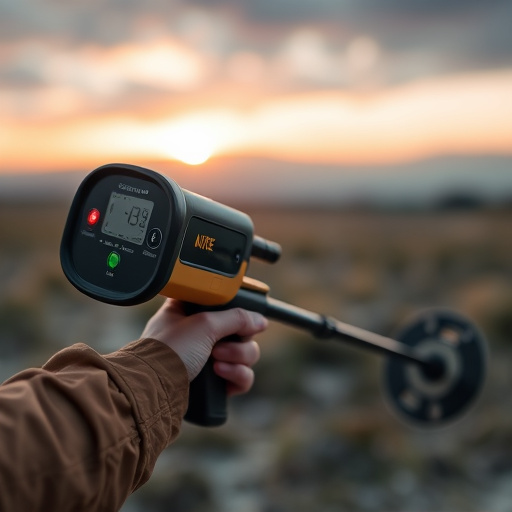Handheld metal detectors are portable, compact devices that locate and identify metallic objects both underground and within structures. They utilise electromagnetic induction, emitting waves that interact with metals, with signals displayed as audio beeps or visual indicators. Essential for treasure hunting, archaeology, security screening, and industrial inspections, these tools enhance safety and preserve historical landmarks without causing damage.
A handheld metal detector is a portable, lightweight device that has transformed various industries and everyday life. With its ability to swiftly and accurately identify metallic objects hidden beneath surfaces, it offers unparalleled versatility. This innovative tool operates on advanced electromagnetic principles, making it a game-changer for security, treasure hunting, and industrial inspections. By employing a simple wave detection mechanism, users can navigate through diverse environments, from beaches to airports, ensuring safety and uncovering secrets from the past.
What is a Handheld Metal Detector?
A handheld metal detector is a portable device designed to locate and identify metallic objects underground or within structures. Unlike larger, stationary models, these compact detectors are easily maneuverable, allowing users to search various environments with ease. They have become indispensable tools for a wide range of applications, from treasure hunting and historical archaeology to security screening and industrial inspections.
Handheld metal detectors operate by emitting electromagnetic waves that interact with metallic items. When a user holds the detector over an area, it detects disturbances in the field caused by nearby metals. These signals are then interpreted and displayed as audio beeps or visual indicators, guiding the user to the exact location of the detected metal object. The portability and versatility of these devices make them a popular choice for professionals and enthusiasts alike, revolutionizing how we explore and interact with our surroundings.
How do Handheld Metal Detectors Work?
Handheld metal detectors are simple yet powerful tools that utilise electromagnetic induction to detect metallic objects. When a handheld detector is moved over the ground, a small coil within the device generates an electromagnetic field. If this field encounters a conductive object like a coin or piece of metal, it induces an electrical current in the object, which is then detected by sensors in the detector. This signal is amplified and transformed into a beep or vibration, alerting the user to the presence of metal beneath the surface.
The sensitivity and depth of detection can vary based on factors like the type of soil, the size and shape of the metal object, and the settings on the detector itself. Modern handheld metal detectors often come equipped with adjustable frequency controls, allowing users to fine-tune their search based on different environments. This versatility makes them indispensable tools for various applications, from treasure hunting and archaeology to security screening and industrial inspections.
Applications and Benefits of Using Handheld Metal Detectors
Handheld metal detectors have a wide range of applications, from security and law enforcement to treasure hunting and historical archaeology. These portable devices offer numerous benefits, making them indispensable tools in various industries. In security settings, they are employed for screening individuals and detecting metallic objects that could pose a threat, ensuring safer environments in public spaces, events, and workplaces. Law enforcement agencies use handheld metal detectors during investigations and search operations to locate missing persons or concealed weapons.
In the realm of treasure hunting and historical exploration, these detectors allow enthusiasts to explore ancient sites and uncover hidden artifacts with ease. They enable precise location and identification of metallic items, facilitating archaeological research and preserving historical treasures. Moreover, their non-invasive nature ensures minimal disruption to the surrounding environment, making them valuable tools for researchers studying sensitive ecosystems or historical landmarks without causing damage.
